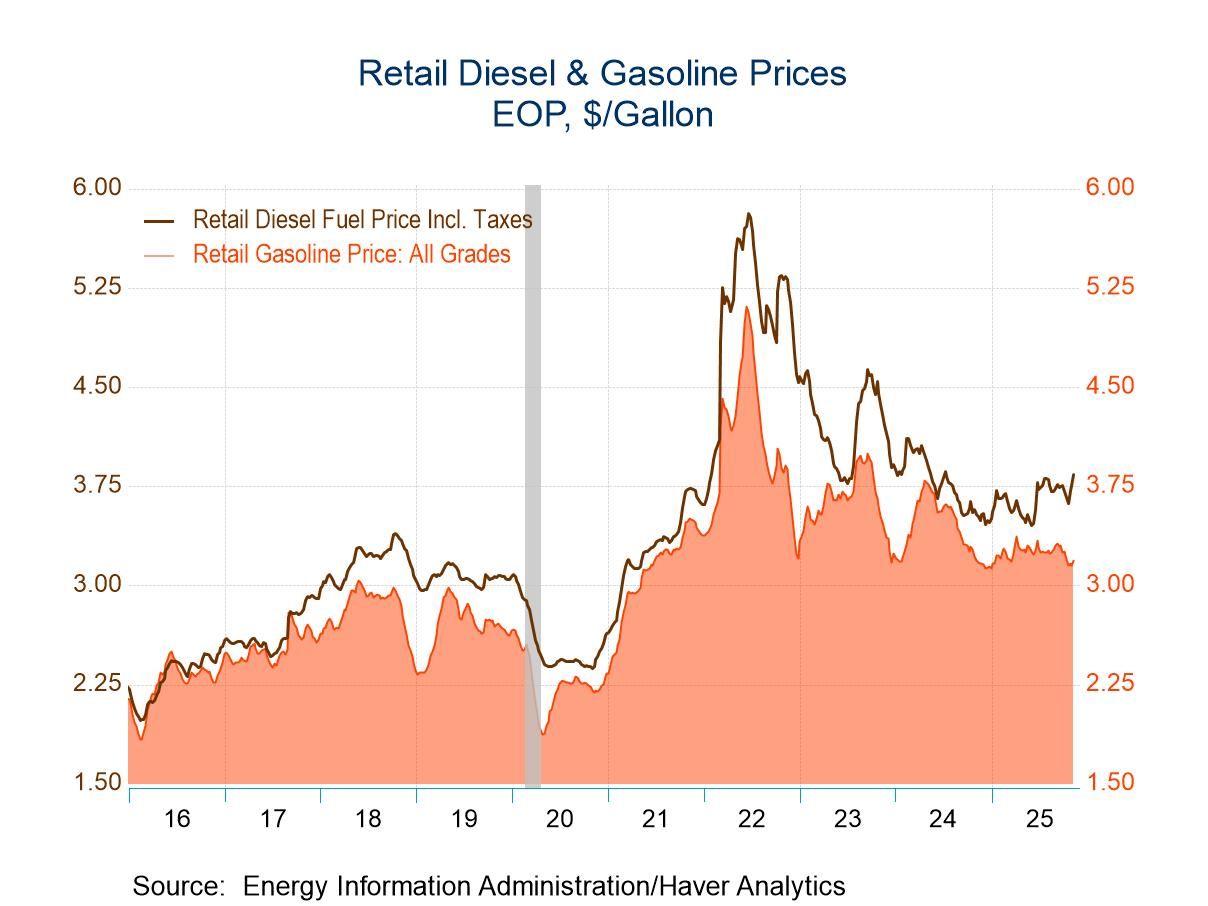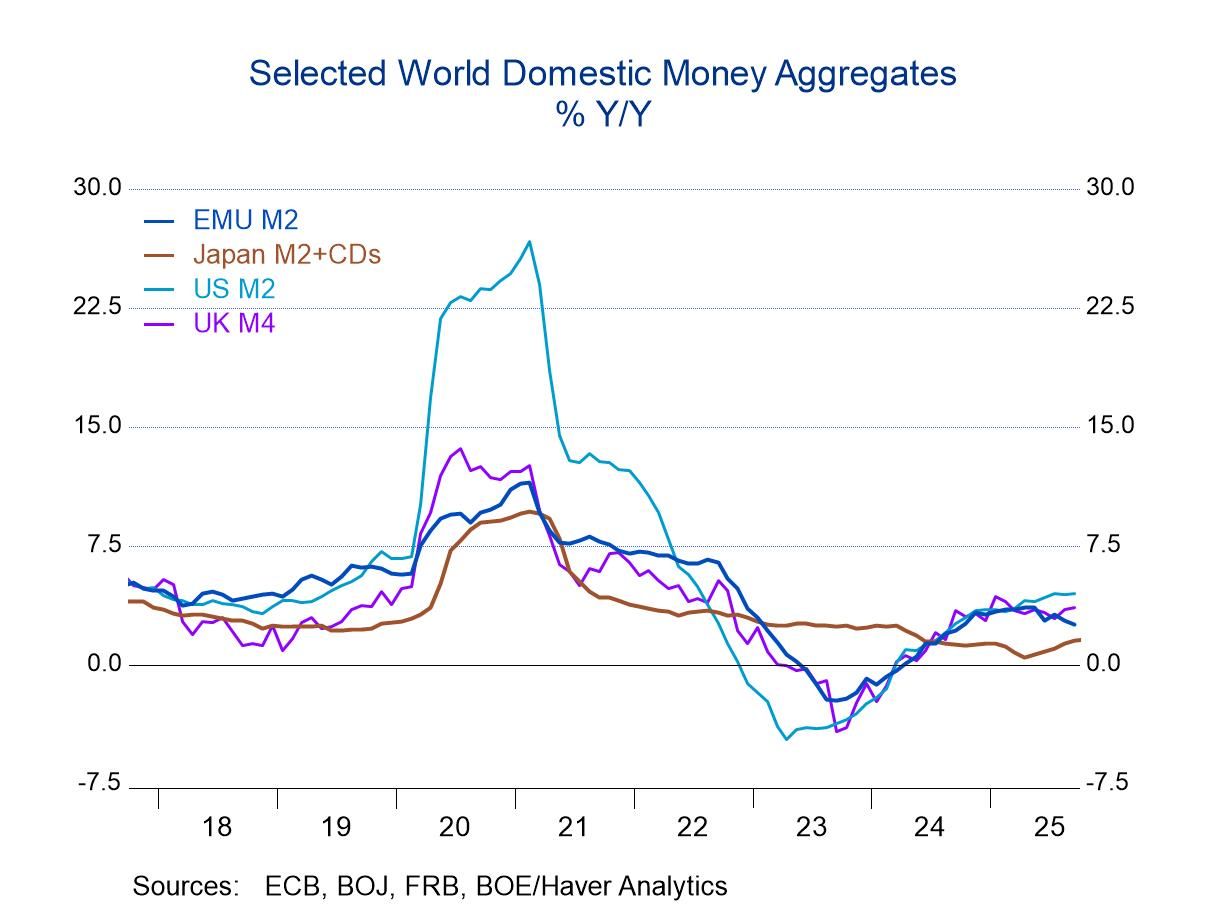 Global| May 06 2025
Global| May 06 2025Global Composite PMIs Erode

Not many respondents are showing absolute slowing. Only five this month. Only six over the last three months on average. The median total PMI score fell to 49.7 showing contraction in April from 51.1 in March. The average fared slightly better. The 12-months to 6-months to 3-months show a moderate but consistent slowing. The breadth of slowing is wide with 60.9% of survey respondents slowing over three months compared to six months.
The percentile standings show the most strength for the BRIC group with reading above 50% (that marks the median). All other groupings have standings below the 50% mark indicating that they are below their respective medians of the last four-plus years.
Over every horizon from 12-months to 6-months to 3-months, more than 50% of the respondents show a weakening (slowing) in their PMI responses.
Among the largest economies, only Italy has a composite PMI standing above its median (above 50%).
Only 9 of 24 respondents have PMI ranked percentile standings above the 50% mark. That underlines the weakness in composite conditions and the breadth of the weakness.
Services sectors no longer are providing the lift to offset ongoing weakness in manufacturing. The differences among countries are narrowing.
Economic conditions across countries may be narrowing for several reasons, one being that the COVID period and then the shock reaction to Russia's invasion from Ukraine put all countries on the same timeline as central banks have been leaning against the shockwaves from those 2 events. As a result of those events, inflation flared but has more recently been falling. Still, inflation continues to be over the top of targets with the European Monetary Union right now making the most progress and Japan facing more late cycle weakness with excessive inflation than other countries in the mix. More recently aggressive tariff policy the United States has put all countries on their back foot and puts everyone on notice that the future has become a lot more uncertain. Central banks that were progressing toward rate cuts now are worried about the possibility of more inflation from tariffs or from the possibility of recession from tariffs - tariffs up the ante on uncertainty as well as on risk. What we see in this month's PMI statistics is a gradual continued erosion as the perceived risk here is that things get steadily but slowly worse as firms, investors, and consumers began to pull in their horns and prepare for something bad to happen not knowing what that might be.

Robert Brusca
AuthorMore in Author Profile »Robert A. Brusca is Chief Economist of Fact and Opinion Economics, a consulting firm he founded in Manhattan. He has been an economist on Wall Street for over 25 years. He has visited central banking and large institutional clients in over 30 countries in his career as an economist. Mr. Brusca was a Divisional Research Chief at the Federal Reserve Bank of NY (Chief of the International Financial markets Division), a Fed Watcher at Irving Trust and Chief Economist at Nikko Securities International. He is widely quoted and appears in various media. Mr. Brusca holds an MA and Ph.D. in economics from Michigan State University and a BA in Economics from the University of Michigan. His research pursues his strong interests in non aligned policy economics as well as international economics. FAO Economics’ research targets investors to assist them in making better investment decisions in stocks, bonds and in a variety of international assets. The company does not manage money and has no conflicts in giving economic advice.






